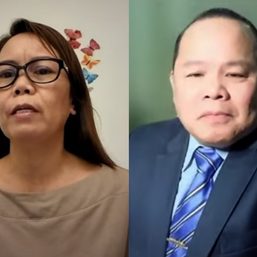SUMMARY
This is AI generated summarization, which may have errors. For context, always refer to the full article.
![[OPINION] Changing the untold narrative of child brides](https://www.rappler.com/tachyon/2021/11/eliminate-violence-against-women-November-25-2021.jpg)
Imagine a 10-year-old girl marrying a man who is 20 years older than her. Because of this, the girl was never able to go to school. Two years later, the girl gives birth to her first child. By the time the girl reaches the age of 20, she already has five children.
Unfortunately, this girl is not just a figment of our imagination. She is real and is still bearing the responsibility of early motherhood that was forced upon her. There are actually many girls in Maguindanao and other provinces who share her story. And there will be many more if we do not put a stop to this practice.
In the Philippines, data from the United Nations Population Fund (UNFPA) show that 1 in 7 Filipino girls are married before reaching 18 years old, the age of consent set by Philippine laws.
A survey by Oxfam Pilipinas in 2019 also found that 24% or 253 out of 1,058 respondents from Bangsamoro Autonomous Region in Muslim Mindanao provinces knew of cases of child marriage. And while child marriage can affect both boys and girls, findings show that 97% of those married as children are girls, highlighting the fact that girls are disproportionately affected.
According to a multi-country study conducted by the UNFPA, the Philippines has only slightly improved in lowering the percentage of girls married between the ages 15 to 19, dropping by just 2% year on year. It is in stark contrast with other Asian countries like the Republic of Korea, Indonesia, and India, which have already reduced their respective percentages to less than half during the last 50 years.
Child marriage is a grave violation of human rights and a serious public health issue that increases girls’ risks of early, unplanned, or unintended pregnancies, sometimes leading to death or complications during pregnancy and childbirth. It also disrupts and infringes on girls’ rights to life, education, safety, and well-being.
The COVID-19 pandemic has also led to alarming and increasing incidences of gender-based violence, especially in evacuation camps and temporary shelters. There is also ample evidence that the social and gender norms fueling the practice of child marriage limit the access of girls and women to sexual and reproductive health information and services.
Even before the COVID-19 pandemic, cases of child marriages are believed to disproportionately increase in areas affected by persistent poverty, disasters, and other crises, based on data gathered during Oxfam’s humanitarian responses in areas such as Cagayan Valley and Lanao del Sur.
Ending child marriage requires a coordinated multi-sectoral approach to engage girls, boys, parents, teachers, and national and local decision-makers. A law that will prohibit child marriage supported by education and child protection programs will safeguard the rights of every child and ensure that they will have full and equal legal protection. It is also essential for duty bearers to work with local communities and women’s rights organizations to deliver culturally, gender-responsive, and sustainable responses.
Our research has shown that norms around gender roles and responsibilities are interlinked with discriminatory practices around child marriage and violence against women and girls. These harmful social norms include men’s decision-making authority and control over partners, family size that shapes fertility desires, and standards around chastity that deny women and girls’ access to sexual and reproductive health services. In some cases, early marriage is also viewed as a “sanction” for girls engaging in premarital sexual activity and pregnancy outside marriage.
Challenging long-held cultural practices and beliefs underpinning child marriage is not that easy, but it doesn’t mean it is not doable.
This year gives us a new reason to hope and change the narrative, hounding girls for decades. The passage of the landmark legislation prohibiting child marriage in the Philippines in both houses of Congress and its ratification by the Bicameral Committee is a big win for children’s rights.
With one step closer to the finish line, we urge President Rodrigo Duterte to make 2021 the year a law is passed to finally ban child marriage in the Philippines for good.
It is never too late. We can still change this story. – Rappler.com
Ana Caspe is the manager of Oxfam Pilipinas’ Creating Spaces Project. Oxfam together with the Al Mujaadila Women’s Association, Philippine Business for Social Progress, Philippine Legislators’ Committee on Population and Development, and the United Youth of the Philippines-Women, implemented the Creating Spaces Project to reduce violence against women and girls, including child, early, and forced marriage in the Philippines.
Add a comment
How does this make you feel?









![[OPINION] The child no one looked for](https://www.rappler.com/tachyon/2024/01/20240123-child-no-one-look-for-1.jpg?resize=257%2C257&crop=262px%2C0px%2C720px%2C720px)




![[OPINYON] Diborsiyo sa mata ng isang anak](https://www.rappler.com/tachyon/2024/06/new-school-divorce-children-june-13-2024.jpg?resize=257%2C257&crop=294px%2C0px%2C720px%2C720px)






There are no comments yet. Add your comment to start the conversation.